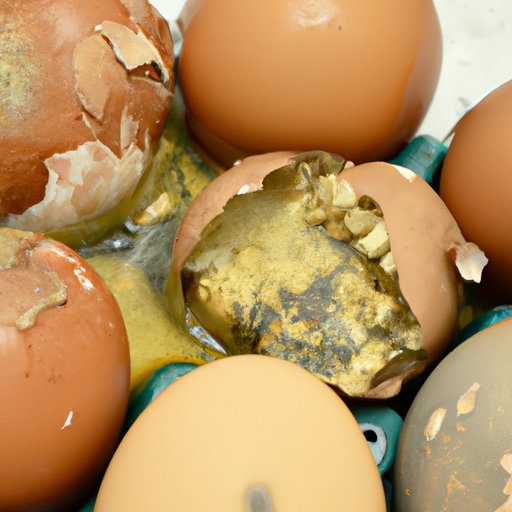Introduction
Eggs are a staple in many households around the world. They’re a versatile ingredient that can be used in breakfast dishes, baked goods, and more. But with egg safety being a top priority for consumers, it’s important to know how to tell if your eggs have gone bad. This article will cover several ways to identify bad eggs so you can avoid any foodborne illness.
Check the Expiration Date
One of the simplest ways to tell if eggs are bad is to check the expiration date on the carton. According to the U.S. Department of Agriculture, fresh eggs should last for up to 5 weeks after purchase. For best results, store them in their original carton and keep them in the coldest part of your refrigerator. This will help preserve their quality and flavor.
When checking the expiration date, look for the words “sell by” or “use by”. If the date has passed, it’s best to discard the eggs as they may no longer be safe to consume.
Inspect the Shell
Another way to tell if eggs are bad is to inspect the shell. Fresh eggs should have a smooth and glossy appearance. If you notice any cracks or discoloration, it’s best to discard the eggs and buy a new carton.
You should also give the eggs a gentle shake. If you hear a sloshing sound, this could indicate that the egg has gone bad. This is because bacteria has begun to grow inside the egg, causing it to fill with liquid.
Sniff Test
The sniff test is another way to determine if eggs are still good. Fresh eggs should have a mild, slightly sweet smell. If you detect any off odors, such as sulfur or ammonia, it’s best to discard the eggs.
It’s important to note that some eggs may have a slightly musty smell, especially if they’ve been stored for a long time. This type of odor is normal, but if the smell is particularly strong, it’s best to err on the side of caution and discard the eggs.
Float Test in Water
The float test is another way to tell if eggs are bad. To perform this test, fill a bowl with cold water and place the egg in the water. If the egg sinks to the bottom and lies on its side, it’s still fresh. However, if the egg floats to the top, it’s best to discard it as it has gone bad.
This is because eggs contain a small air pocket that gets larger as the egg ages. When this air pocket grows too large, the egg will float in water due to the increased buoyancy.
Crack One Open
Finally, if you’re still unsure about the quality of an egg, you can always crack it open and take a look. Fresh eggs should have a bright yellow or orange yolk and thick white. If the yolk appears flat and runny or the white is thin and watery, it’s best to discard the egg.
It’s also important to note that eggs can spoil even if they appear to be fine on the outside. If you crack one open and detect any off odors or strange colors, it’s best to discard it as it may no longer be safe to consume.
Conclusion
Knowing how to tell if eggs are bad is essential for food safety. By following the tips outlined above, you can ensure that your eggs are still fresh and safe to eat. Be sure to check the expiration date, inspect the shell, do a sniff test, perform a float test, and crack one open if necessary. If any of these tests indicate that the eggs have gone bad, it’s best to discard them and buy a new carton.
(Note: Is this article not meeting your expectations? Do you have knowledge or insights to share? Unlock new opportunities and expand your reach by joining our authors team. Click Registration to join us and share your expertise with our readers.)
